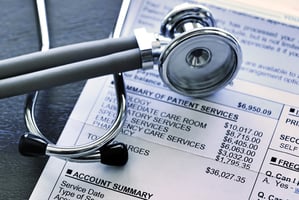Running a medical practice involves managing dozens of ongoing costs, and understanding them is...

.jpeg?width=770&name=alone-bills-calculator-1253591%20(1).jpeg)
Here at 99MGMT, our primary goal is to help medical practices run as efficiently as possible, and one of the most impactful ways to help overall performance at a practice is to decrease expenses to increase revenue.
In a previous post where we addressed practice overhead, we discussed what expenses make up the cost known as “overhead” in terms of medical practice expenses:
Generally speaking, you should expect expenses from your support staff, medical supplies, and facility operations to make up the majority of your practice overhead.
The following are a more in-depth breakdown of specific expenses that count towards overhead:
It's going to be incredibly difficult to lower your practice overhead if you don’t know what your overhead is!
Here are two formulas that can help you determine what your overhead is, as well as where it should approximately be:
Every medical practice has strong-suits and weaker points. It’s important for your clinic’s growth to make sure you’re aware of these aspects, that way you know where you’re solid in your planning, as well as where you have room to improve.
The worst possible way to go about making any changes in your practice would be to dive in without a proper plan.
Make sure that you keep your goals in mind and set up your next steps accordingly, and you will find much more success than you would by just winging it.
Any time you try to make changes (in any walk of life, but especially in a medical practice) there will be some hits and some misses.
The most important thing to remember as you move forward in your improvements is to be flexible and willing to make adjustments in order to keep your practice running successfully.


Running a medical practice involves managing dozens of ongoing costs, and understanding them is...

A Texas physician opened a new practice with everything in place – staff hired, patients scheduled,...

Your biller is three weeks behind on claims. Two no-shows went unfilled this morning. Your office...

Every minute spent chasing paperwork or fixing scheduling issues is time taken away from patients....

Most physicians didn’t go through years of training to become billing experts, HR managers, or IT...

If your medical practice overhead seems to be eating into your revenue, you’re not alone. Research...

Marketing and referral strategies are part of running a private practice. In Texas, they come with...
.jpeg?height=200&name=alone-bills-calculator-1253591%20(1).jpeg)
Opening a medical clinic is rewarding – but it comes with upfront costs. Lease deposits. Equipment....

Ending a relationship with a patient isn’t something providers take lightly. But when certain...

The Stark Law, officially called the Physician Self-Referral Law, is a federal rule that shapes how...
Leave a Comment